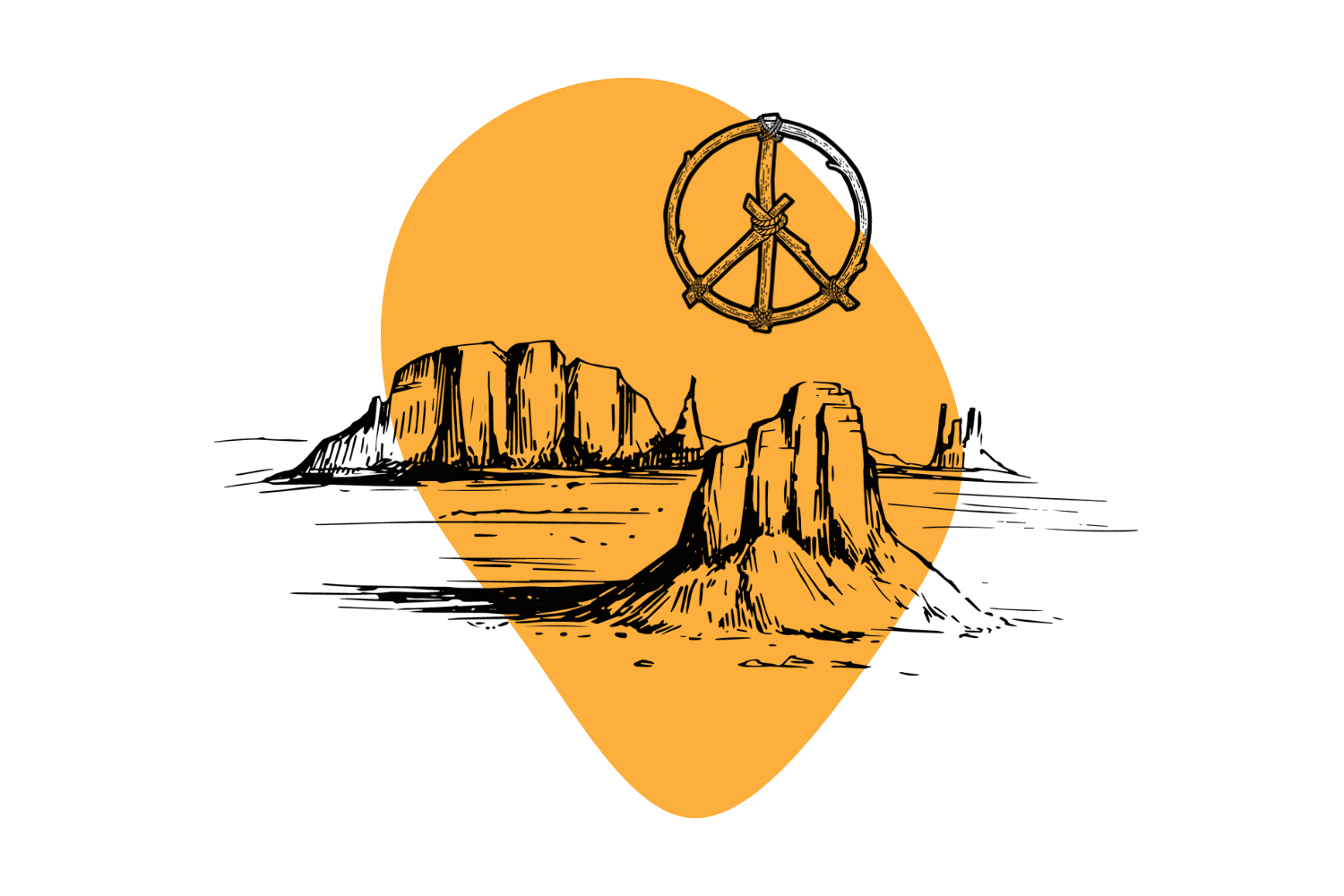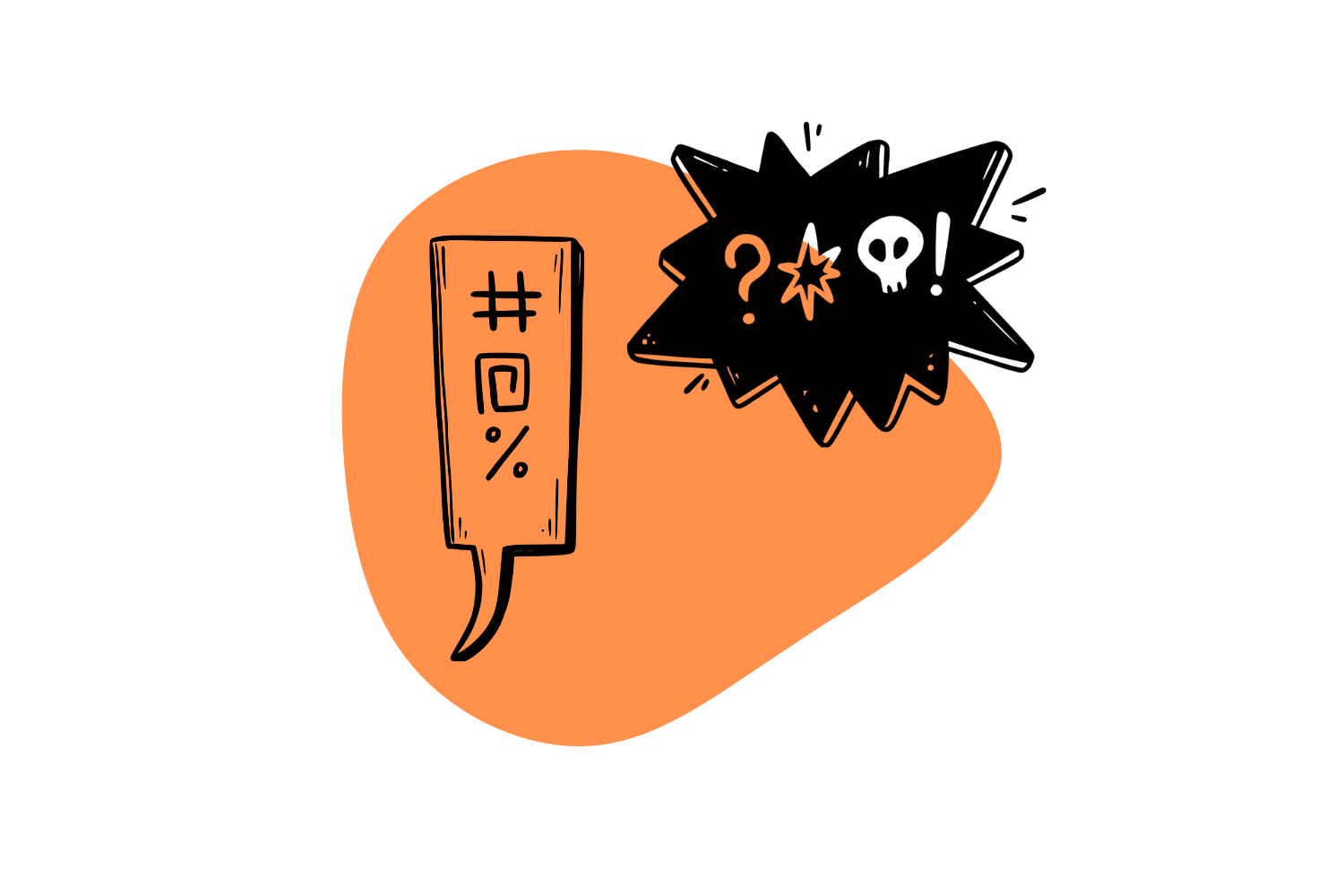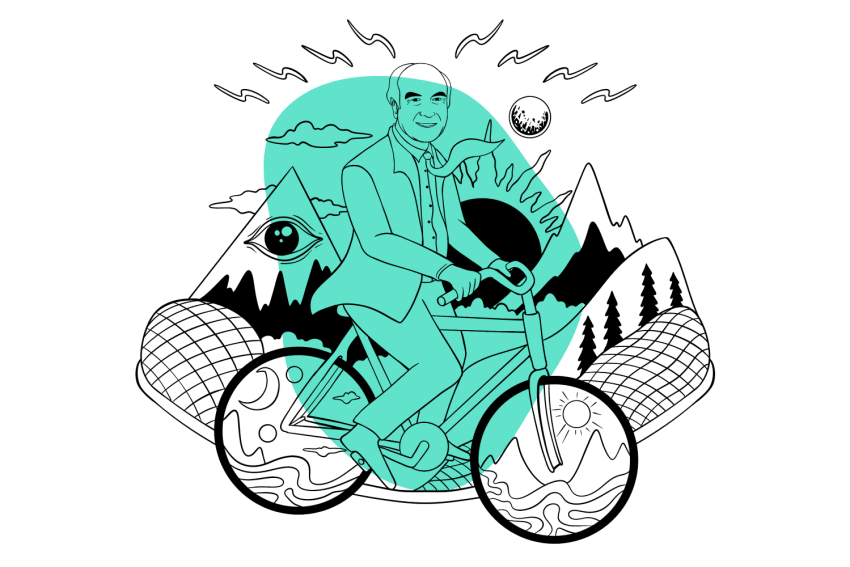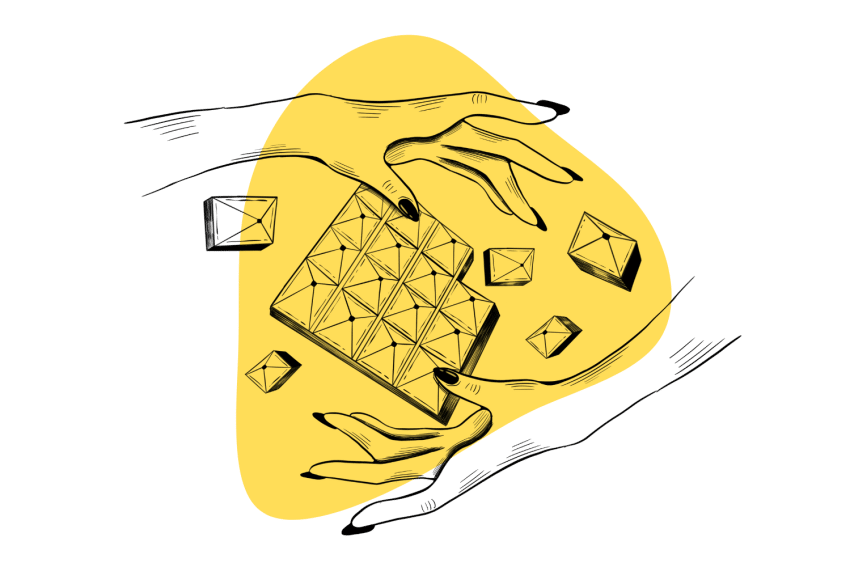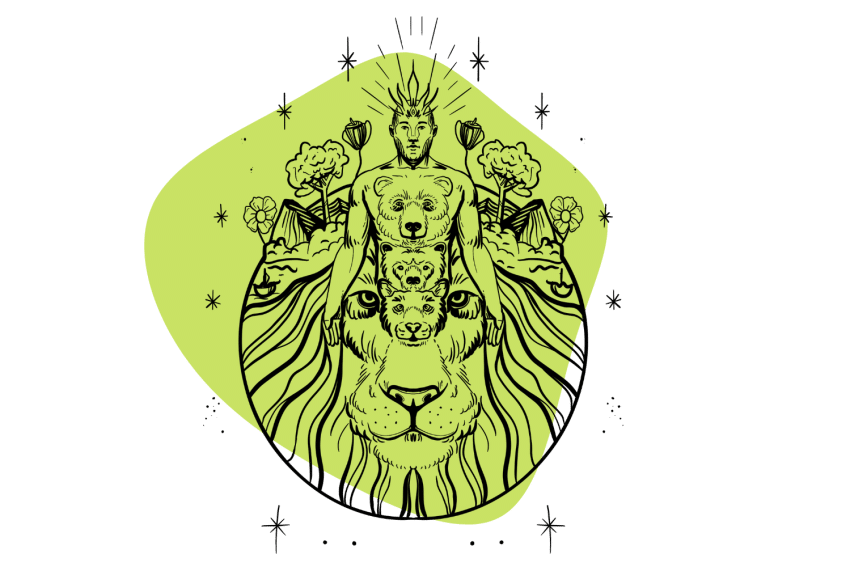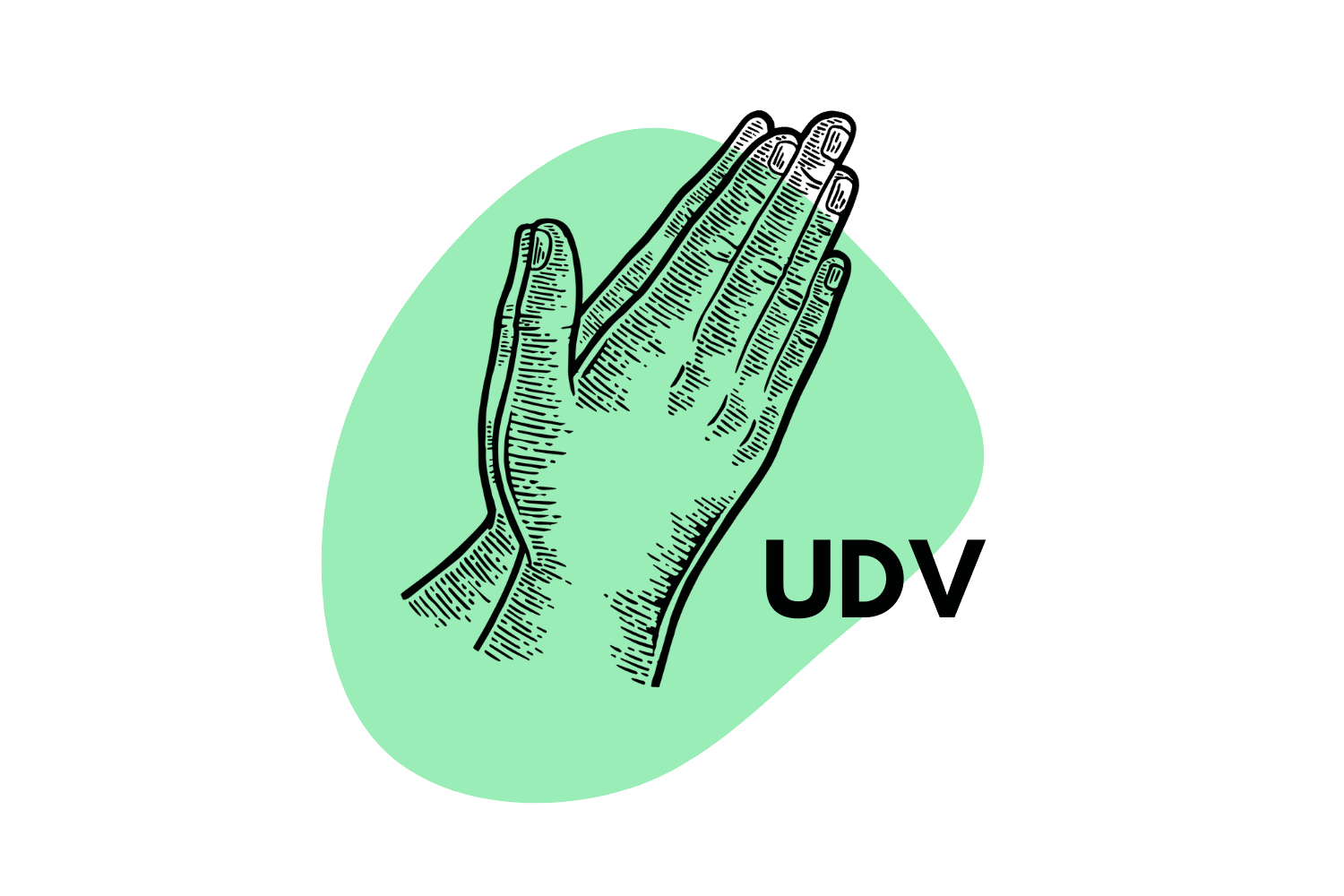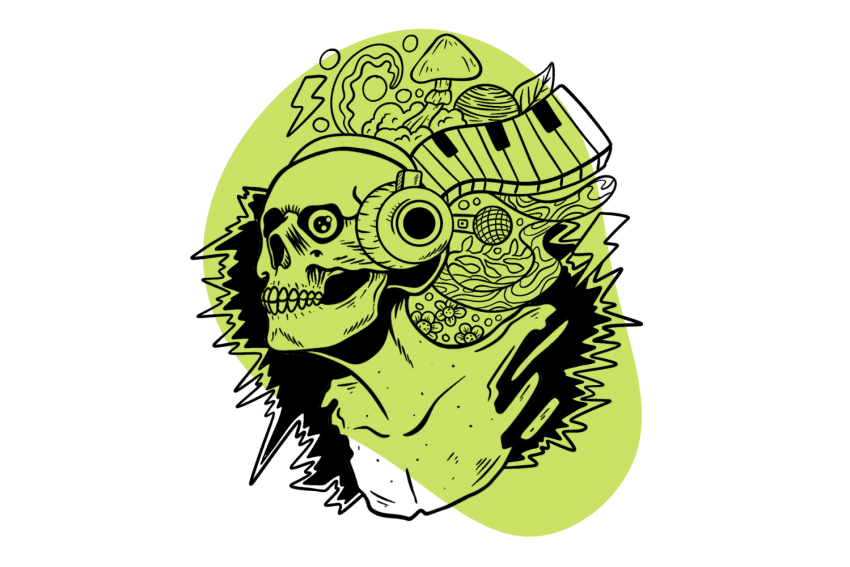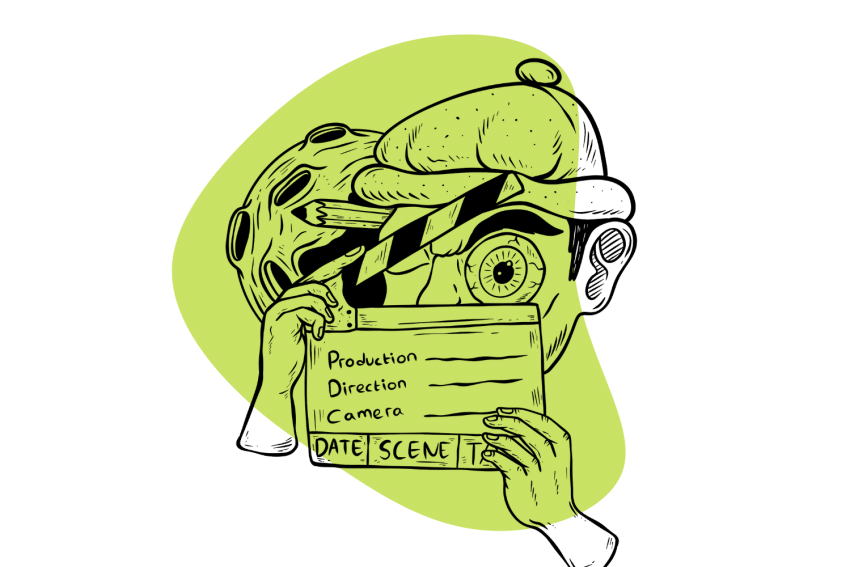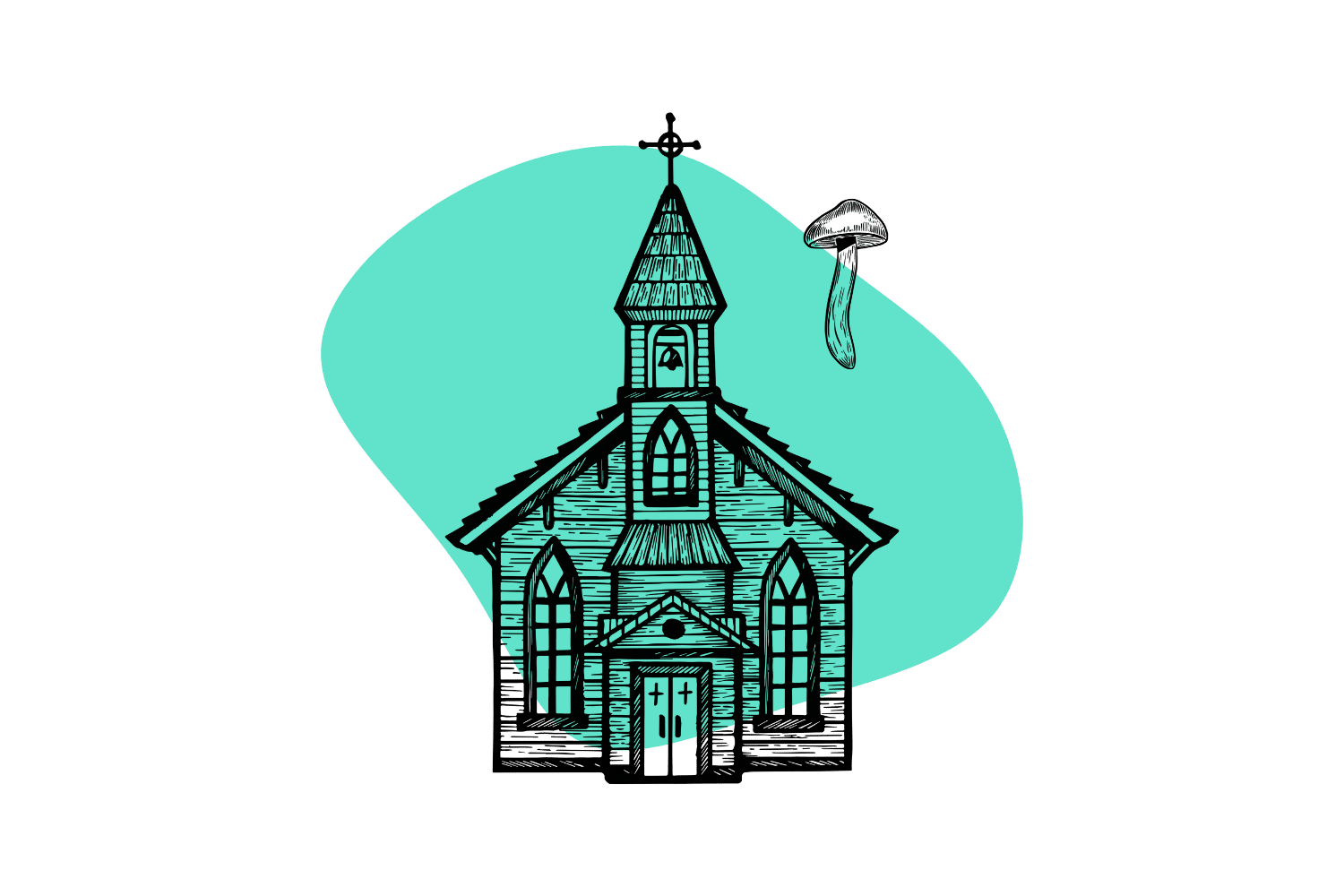Psychedelic FAQs
Answering all your deepest questions about psychedelics. Reach out to us at feedback@tripsitter.com for more questions.
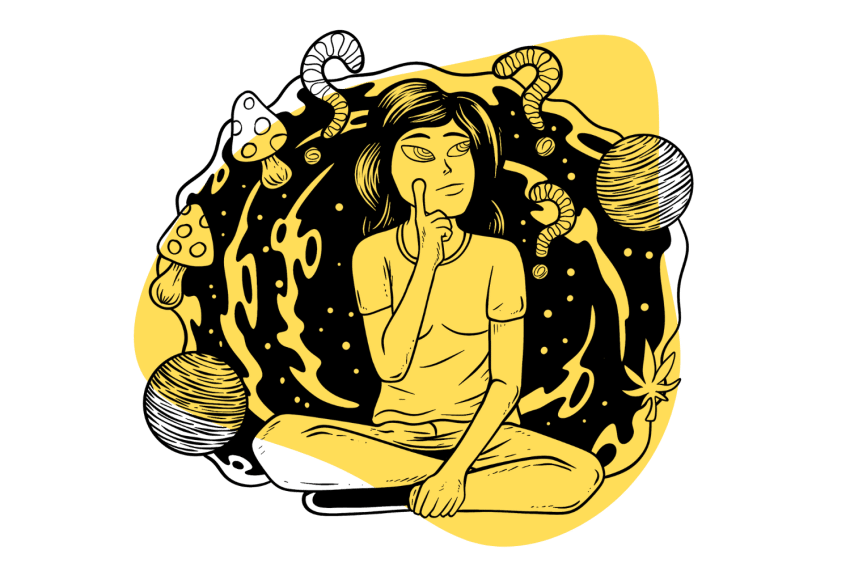
Have a question about psychedelics?
You’re not alone — we receive dozens of questions surrounding the use and applications of psychoactive substances on a daily basis.
Here’s a collection of the most common questions we get asked. We cover how psychedelics work, what they’re used for, terms & definitions you should know about, and much more.
1. Psychedelic Terms & Definitions
If our field is “to advance”, we must – without displacing creativity and aesthetics – make sure our terminology is clear.
Jef Raskin
1.1. What is a Psychedelic?
A psychedelic is a substance, either natural or synthetic, that induces an altered state of consciousness.
There have been lots of alternative words coined over the years to describe psychedelics, including phanerothyme, entheogen, and psychotropic.
→ Learn more about psychedelic substances
1.2. What is a Dissociative Substance?
A dissociative is a substance that forcibly disconnects (dissociates) you from reality. People going through dissociative states experience an altered reality. This can include lucid, dream-like states, hallucinations, and may lead the user to experience loss over the control of their thoughts, emotions, or actions.
Dissociative drugs include ketamine, nitrous oxide, PCP, or DXM. Some drug families, such as the arylcyclohexylamines contain especially high concentration of dissociative substances.
1.3. What is a Deliriant?
Deliriants are distinct from both psychedelics and dissociatives in the type of experiences they produce.
Delirium is characterized by a state of confusion, agitation, confabulation, and visual hallucinations. This is different from the lucid states induced by dissociatives.
Delirium is almost always a negative experience. They’re often disturbing and dark in nature. It’s common for people caught in delirium to inflict self-harm or lose control over their actions.
Most deliriants work through the cholinergic system, such as datura, belladonna, henbane, mandrake, or Brugmansia.
1.4. What is a Euphoric?
A euphoric is a substance that induces feelings of pleasure and happiness. Euphoria is a natural response to reward certain activities — such as social interaction, physical exercise, eating, listening to music, laughter, and sex.
Many addictive drugs are considered euphorics, such as the opiates and amphetamines. All humans have the desire to feel pleasure and happiness, so when a substance can reliably induce these feelings, it’s reasonable for someone to want to come back for more as a way to elicit this pleasurable experience again. This is especially the case in people who are otherwise unable to initiate these feelings from other activities (AKA depression).
1.5. What is an Entheogen?
An entheogen is a psychedelic used specifically for the purpose of religious sacrament or spiritual growth and development. Many psychedelic plants are considered entheogens, such as peyote or San Pedro cactus, magic mushrooms, marijuana, ayahuasca, and salvia.
1.6. What is an Entactogen or Empathogen?
Entactogen and empathogen have the same meaning. They’re used to describe substances that produce a feeling of connection, emotional communion, oneness, and emotional openness with the self, others, and the world. They essentially increase our sense of empathy towards others.
Sometimes the word entactogen is differentiated as a “psychedelic with empathogenic properties.”
The quintessential “empathogenic” drug is MDMA but other drugs such as 2C-B or some DOX compounds have this effect as well.
1.7. What Does “Celerity” Mean?
Think “acceleration.”
Celerity refers to the speed at which a psychoactive trip begins and ends for a given substance.
Some of the compounds with the highest celerity are 5-MeO-DMT and salvia — both of which produce an onset of effects within seconds and completely wear off in under an hour. These substances have a high celerity.
Other substances, such as ayahuasca, take an hour or more to start producing effects, which then build up gradually and wear off slowly over the course of several hours. These substances have a low celerity.
1.8. What Is “Body Load?”
Body load refers to the intensity of effects a psychedelic compound has on the body. Substances that have a high body load may affect tactile perception, cause muscle tension, tingling sensations, or induce feelings of nausea and cramping.
1.9. What Are External Hallucinations?
External hallucinations are integrated seamlessly with real life. People may experience alterations in physical objects in their environment, or see objects, people, or other entities in the environment that aren’t really there.
1.10. What Are Internal Hallucinations
Internal hallucinations are completely imagined and in the mind. They often don’t have any relationship with the current environment and can take place whether the eyes are open or closed.
1.11. What is Numinosity?
Numinosity refers to the mysterious and inexpressible experience that has a psychologically healing impact.
This term was first coined by Rudolf Otto, and was frequently used by Carl Jung.
2. Psychedelic Safety
[Psychedelics] are powerful tools and, like any tool, they can be used skillfully, ineptly, or destructively. The result will be critically dependent on the set and setting.”
Stanislav Grof
2.1. Are Psychedelics Safe?
Not all psychedelics are safe, and those that are, aren’t necessarily safe for everybody.
With that said, the classical psychedelics — magic mushrooms, LSD, mescaline (peyote & San Pedro), ayahuasca, and salvia have never led to deaths from overdose, addiction, or as a result of adverse reactions. The toxic threshold for these substances is so high it’s virtually impossible to reach without injecting the drug directly into the bloodstream. None of these substances should ever be consumed this way outside a clinical setting.
→ Learn more about how to use psychedelics safely & responsibly.
The psychological effects can be dangerous, however.
Psychedelics are especially dangerous for people with underlying psychiatric disorders. There have been reports of people with a history of schizophrenia, mania, or psychosis undergoing psychotic breaks after using psychedelics.
Additionally, some psychedelic substances (both natural and synthetic) are inherently dangerous. Ibogaine & NBOMe, for example, has been known to cause deaths via cardiac arrest. Other substances, such as synthetic cathinones, tropane alkaloids, synthetic cannabinoids, and anticholinergic hallucinogens (datura, mandrake, & Brugmansia), also have potentially lethal side effects.
Another potential risk of using psychedelics comes from the addition of adulterants in otherwise “safe” psychedelic substances. For example, many LSD tablets have been found to contain a similar, but more dangerous substance called NBOMe. It’s also not uncommon to find dangerous adulterants like fentanyl or other opiates in powdered psychedelics like mescaline or MDMA.
The best way to mitigate this danger is to always test a sample of your substance before you take it.
→ Learn more about testing psychedelic substances.
2.2. Can You Overdose on Psychedelics?
What we refer to as the “classical psychedelics” won’t cause overdose, even at concentrations several times above the recommended range. These include magic mushrooms, LSD, mescaline, and ayahuasca. Even concentrated DMT has a toxic threshold that’s so high it’s nearly impossible to reach.
Other substances are much more dangerous and can lead to overdose if used incorrectly. Examples include MDMA, MDA, opiates, NBOMe’s, DXM, GHB, some of the 2C family of drugs, and others.
You should always follow the recommended dosages for every substance you decide to take and do your research about the dangers of using each one.
2.3. What’s the Most Dangerous Psychedelic?
Some substances are riskier in certain aspects and less risky in others.
For example, PCP is not inherently deadly, but it brings a much higher risk of psychosis, mental illness, or self-harm than most other psychedelics.
Other substances, such as synthetic cathinones (AKA bath salts) or ibogaine, bring significant risk to people with existing heart disease but a much lower risk to those with good cardiovascular health.
NBOMe’s are particularly dangerous because they run the risk of both mental health disease as well as death or injury. But it’s hard to place these as “the most dangerous” because the incidence of physical or psychological damage is still quite low among people using these substances.
While I can’t give a specific answer to what’s the most dangerous psychedelic, here’s a group of substances that bring the most considerable risk to human life and mental wellbeing:
- Anticholinergics (Datura, brugmansia, mandrake, scopolamine)
- DOX Compounds (DOM, DOI, DOB)
- GHB & Alcohol
- Ibogaine
- NBOMes
- Opiates (especially fentanyl and carfentanil)
- Arylcyclohexylamines (PCP, Ketamine, MXE)
2.4. What’s the Best Psychedelic For Beginners?
There’s a lot of debate about which psychedelic is best for beginners — but most will agree that the ideal experience for newbies is one that retains a fair amount of control for the user. This would rule out psychedelics like ayahuasca, DMT, or ibogaine.
We polled our readers to see which psychedelic they tried first and received some interesting results.
The vast majority of users reported LSD (37%) or magic mushrooms (32%) as their first psychedelic experience. These results excluded marijuana, which was actually the most common answer (62%). This is likely due to the widespread availability of these substances on the market.
Due to issues with fake LSD, we always recommend testing a sample before you begin. Mushrooms are safer in this respect because they’re harder to fake.
There’s an argument that could be made for other substances, such as mescaline or 2C-B, instead due to their more gentle and somewhat euphoric effects. Both of these substances maintain a stronger sense of mental clarity and control than magic mushrooms or other psychedelics.
In general, any beginner should start with a dose on the low end of the spectrum for the given substance. You can always take more later, but once you’ve taken too much, you can’t undo it. It’s also important to do your research before you begin and have a trusted and sober trip sitter to stay with you throughout the experience.
Related: Rolling Safe — Taking MDMA For the First Time
2.5. What is a Trip Sitter?
A trip sitter is a sober person that accompanies one or more people going through a psychedelic experience.
Their role is to be a calm, responsible, and sober presence for participants. A trip sitter is one of the four pillars of safe and responsible psychedelic exploration.
3. Psychedelic Science
By banning psychedelic research we have not only given up the study of an interesting drug or group of substances, but also abandoned one of the most promising approaches to the understanding of the human mind and consciousness.”
Stanislav Grof
3.1. Are All Psychedelics the Same?
Every psychedelic is different, but there are some very close similarities between a few of them. Even those that work through the same mechanisms will have distinct differences in the experiences they produce. For example, DMT and LSD work through many of the same mechanisms, but the experience is profoundly different between these two.
Even LSD and psilocybin, which are very similar in their chemical structure and effect profiles, have a unique experience overall.
3.2. How Do Psychedelics Work?
There are four primary categories of psychedelics depending on how they work — that is, how they exert their effects:
- Tryptamine-based psychedelics — These substances work by activating the 5HT2A receptors. These substances include LSD, psilocybin, DMT, and mescaline
- Kappa-opioid-based psychedelics — These substances work by activating the kappa-opioid receptors. Salvia is the primary psychoactive in this class.
- NMDA-based psychedelics — These substances work by blocking NMDA receptors. Substances include ketamine, PCP, DXM, and nitrous oxide.
- Cholinergic-based psychedelics — These substances work by blocking the cholinergic receptors. Substances include datura, mandrake, Brugmansia, and scopolamine.
3.3. What is the Default Mode Network?
The default mode network (DMN) is one of the large-scale brain networks. It’s tasked with some of the most abstract functions in the human brain. The DMN acts as a reducing valve, limiting the information we take into the brain through our senses as well as the thoughts generated from deeper brain networks.
The DMN is thought to be a key part of what we can call “ego” because it’s tasked with regulating how we interpret “self” from “other” and reduces entropy or “randomness” in the brain.
When we take psychedelics, the DMN is suppressed, increasing entropy and reducing the control of our “ego.”
4. Legality
What if, through responsible exploration with psychedelics, we free our minds? Free-thinkers are more difficult to manipulate and control, which begs the question: Why are psychedelics illegal?”
Zoe Helene
4.1. Are Psychedelics Illegal?
Most psychedelic substances are illegal in most parts of the world — but times are changing. Every few months, a new bill enters into law to remove certain restrictions on specific psychedelic compounds.
Recently, Oregon, USA decriminalized all drugs, and countries like Colombia, The Czech Republic, The Netherlands, Germany, Portugal, Argentina, Costa Rica, Mexico, and Vancouver, Canada have all decriminalized drugs (including psychedelics) for personal use.
Certain psychedelics have also managed to escape restrictive drug laws to begin with — such as salvia, wild lettuce, morning glory, nutmeg, and in some places even magic mushrooms, ayahuasca, or peyote.
More dangerous psychedelics like datura, Brugmansia, and mandrake are also legal in many parts of the world — though they aren’t popular due to the terrifying and sometimes deadly consequences of using them.
4.2. What’s The Difference Between Decriminalization & Legalization?
Decriminalization and legalization are not the same.
When something is decriminalized, it means the punishment for having that substance is either significantly reduced or eliminated entirely. The term is used to describe a change in the law that was previously very strict. It doesn’t mean the substance is legal to own or sell, just that those caught with it will get a more lenient punishment.
Legalization is completely different. When something is legalized, it indicates a change that officially allows the possession and sale of a particular substance. There are often stipulations around who can buy it (such as people over a minimum age) or limits on the quantity a person is allowed to buy at one time. Additionally, not all legalization gives the widespread public access to a substance. Many times, the substance will become legal for people that have been granted medical use only.
When talking about psychedelics, most reforms involve decriminalization rather than legalization. You may still receive a ticket and/or have the drug confiscated if you’re caught in possession.
5. Individual Compounds
Answering questions about specific psychedelic compounds. For a more extensive roundup of psychedelic drugs check out our ultimate guide to psychedelics.
5.1. What Are Magic Mushrooms?
Magic mushrooms refer to any psilocin and psilocybin-containing species of fungi. The most common is Psilocybe cubensis, but there are many other species as well — such as Psilocybe cyanescens, Psilocybe azurescens, Psilocybe semilanceata, and others.
5.2. What is DMT?
DMT stands for dimethyltryptamine. It’s one of the strongest psychedelic compounds currently known. There are a few different forms.
N,N-DMT is the type found in the psychoactive Amazonian brew, ayahuasca,— and 5-MeO-DMT is the version found in the psychoactive secretions of the Sonoran desert toad. Both are profoundly psychoactive and have a rich history of traditional use for mystical and sacramental medicine.
There’s also a wide range of other derivatives and research chemicals modeled after DMT.
5.3. What is LSD?
LSD stands for lysergic acid diethylamide. It’s a synthetic derivative of an alkaloid found in ergot — which is a species of fungi that infects grains.
LSD is one of the quintessential psychedelics and one of the driving forces behind the counterculture of the 1960s. It continues to be one of the most popular psychedelic substances today.
5.4. What is Salvia?
Salvia is the common name for Salvia divinorum — which is a member of the sage family. It’s the only species in the entire genus that contains the powerful psychedelic known as salvinorin A.
Salvia is one of the strongest psychedelics known — producing powerful hallucinations and altered states of consciousness.
5.5. What is Ketamine?
Ketamine is used as a dissociative analgesic for surgery. It was invented and developed to replace PCP, which has similar effects but comes with much higher chances of producing lasting side effects.
The effects of ketamine are dependent on the dose.
Low dose ketamine feels similar to MDMA or 2C-B — producing a sense of peace and tranquility, but also stimulation and empathy with others. It’s used as a club drug in lower doses.
High doses become much more psychedelic. It forces you into a profound dissociative and lucid state that can last up to a few hours at a time.
5.6. What is Mescaline?
Mescaline is the active ingredient in three species of psychoactive cacti — peyote, San Pedro, and the Peruvian torch cactus.
The effects of mescaline are very similar to LSD or magic mushrooms but tend to come with a higher degree of mental clarity and grounding. This psychedelic is much rarer than others in its class, but most people who take it consider it to be the best psychedelic overall. It doesn’t produce intense visions or deep introspection but does a great job at showing you how to live more presently and can be a very enjoyable experience overall.
5.7. What is 2C-B?
2C-B has its own characteristic experience that’s often regarded as being somewhere between MDMA and LSD.
It was one of the most impactful substances produced by Alexander Shulgin in his lab — out of over 200 other compounds.
2C-B isn’t well-known by the mainstream public but is regarded as one an ideal psychedelic substance by those that have used it.
Did We Miss Something?
We’re continually evolving our database and adding new questions based on the feedback received by our readers.
If you have any questions regarding psychedelics or want to reach out and connect, please shoot us an email at feedback@tripsitter.com.
We’d love to hear from you!
Additionally, if you’ve used psychedelics in the past and want to share your experience to help us expand our understanding of these incredible substances, please consider filling out one or more of our psychedelic surveys (completed in 6 minutes or less).
Thank you for reading!

